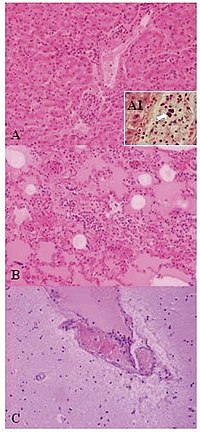
Photo from wikipedia
Traditional cheeses produced from raw milk exhibit a complex microbiota, characterized by a sequence of different microorganisms from milk coagulation and throughout maturation. Lactic acid bacteria (LAB) play an essential… Click to show full abstract
Traditional cheeses produced from raw milk exhibit a complex microbiota, characterized by a sequence of different microorganisms from milk coagulation and throughout maturation. Lactic acid bacteria (LAB) play an essential role in traditional cheese making, either as starter cultures that cause the rapid acidification of milk or as secondary microbiota that play an important role during cheese ripening. The enzymes produced by such dynamic LAB communities in raw milk are crucial, since they support proteolysis and lipolysis as chief drivers of flavor and texture of cheese. Recently, several LAB species have been characterized and used as probiotics that successfully promote human health. This review highlights the latest trends encompassing LAB acting in traditional raw milk cheeses (from cow, sheep, and goat milk), and their potential as probiotics and producers of bioactive compounds with health-promoting effects.
Journal Title: Foods
Year Published: 2022
Link to full text (if available)
Share on Social Media: Sign Up to like & get
recommendations!